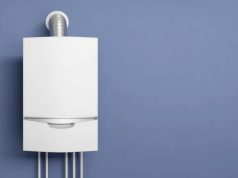When winter arrives, all homeowners want to ensure warmth and comfort in their house. One way to ensure this is by maintaining your heat pump. This article will discuss how heat pump works, including their benefits and some of the available types. Keep reading to learn more.
How does a heat pump work?
A heat pump is a device that transfers heat energy from one location to another. This energy can be transferred in two ways: either by heating or cooling the air or by heating or cooling a liquid. In the United States, most heat pumps use air as the heat-transfer medium.
A typical heat pump system consists of three main components: the outdoor unit, the indoor unit, and the refrigerant lines. The outdoor unit is typically installed on the roof or in an outdoor location exposed to the elements. The indoor unit is installed in the home, either in the basement, attic, or crawlspace. The refrigerant lines connect the outdoor and indoor units.
The outdoor unit contains a compressor, condenser, and expansion valve. The compressor is a pump that compresses the refrigerant gas. The condenser is a device that transfers heat from the compressed gas to the surrounding air. The expansion valve is a device that regulates the flow of refrigerant gas into the evaporator.
The indoor unit contains the evaporator, blower, and filter. The evaporator is a device that absorbs heat from the surrounding air. The blower is a device that blows air over the evaporator to circulate the heat throughout the home. The filter is a device that removes dust and other particles from the air. The refrigerant lines are made of copper and are very thin. The refrigerant lines carry the refrigerant gas between the outdoor and indoor units.
What are the different types of heat pumps available?

There are three common types of heat pumps available today: air-source, water-source, and geothermal. Each type has its own advantages and disadvantages. Air-to-air heat pumps extract heat from the air and use it to heat your home. They are a great way to heat your home if you live in a climate that is cold in the winter and hot in the summer. Air-to-air heat pumps work by drawing in cool air from the outside and heating it. The heated air is then blown into your home. Air-to-air heat pumps are also very energy efficient and can save you a lot of money on your energy bills.
A geothermal heat pump is a ground-source system that uses the earth as the heat source and heat sink. The three types of geothermal heat pumps are open loop, closed loop, and pond loop. The open loop system pumps groundwater from a well into the pump and discharges it back into the ground after use. The closed loop system uses a thermal fluid to transfer heat between the ground and the building. The pond loop system uses a body of water, such as a pond or lake, as the heat sink.
What are the benefits of a heat pump?
A heat pump is a device that transfers heat energy from one place to another. This can be done in many ways, but the most common is to extract heat from the air and then use that heat to warm up a different area. There are several benefits to using a heat pump. Perhaps the most obvious is that it can save you money on energy bills. Heat pumps are very efficient at transferring heat and can often be more efficient than traditional heating methods.
Another significant benefit is that heat pumps are environmentally friendly. They don’t produce any emissions, and they help reduce emissions by displacing traditional heating methods. Heat pumps are also an excellent option for people who want to go green. Not only do they save energy and help the environment, but they are also a very efficient way to heat your home.
Knowing how heat pumps work is a good way to properly maintain and install this energy-efficient technology. Heat pumps are thus able to provide heating and cooling for buildings at comparatively lower costs than traditional heating and cooling systems, so install one and see the difference in your energy bills.














